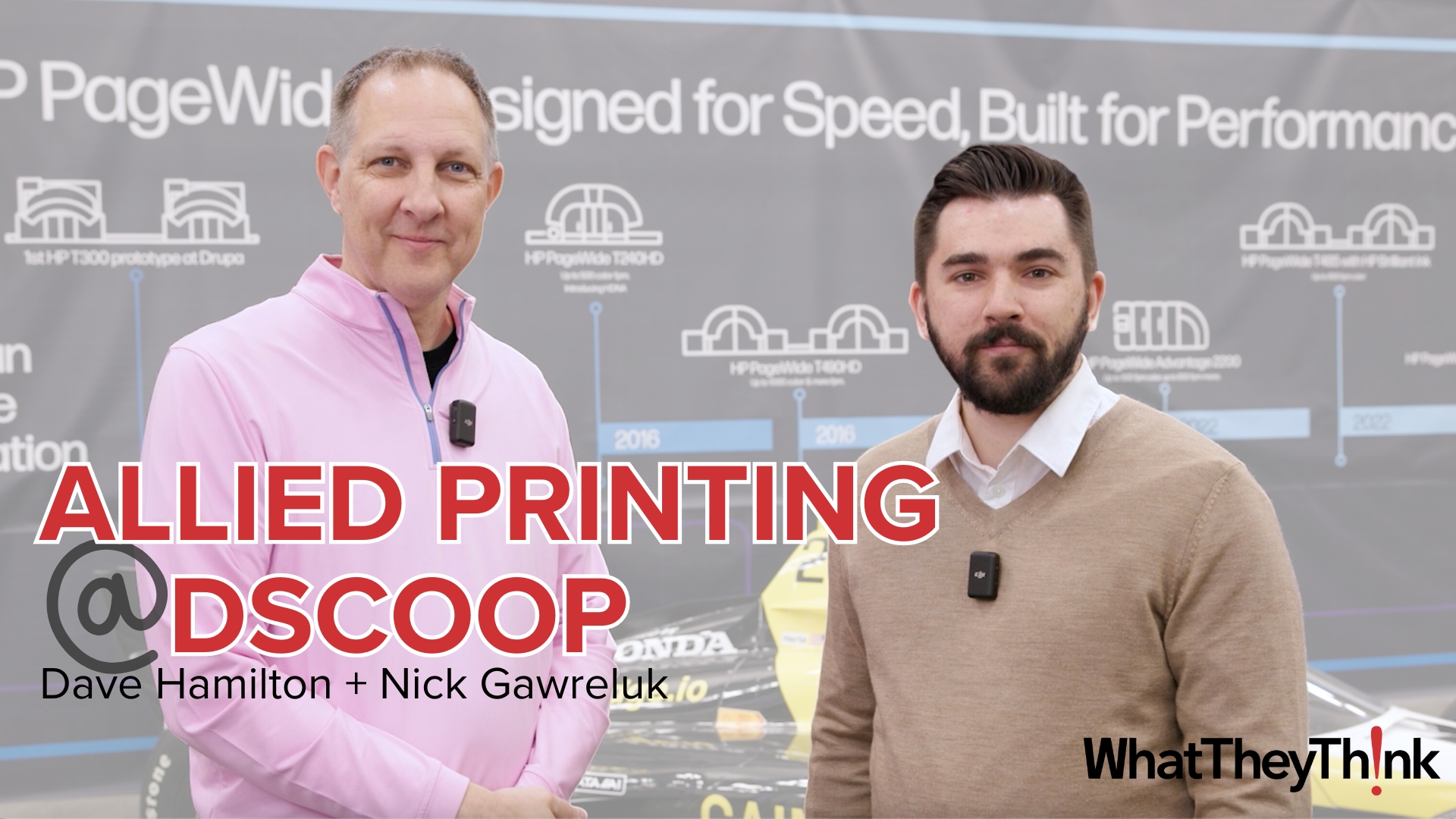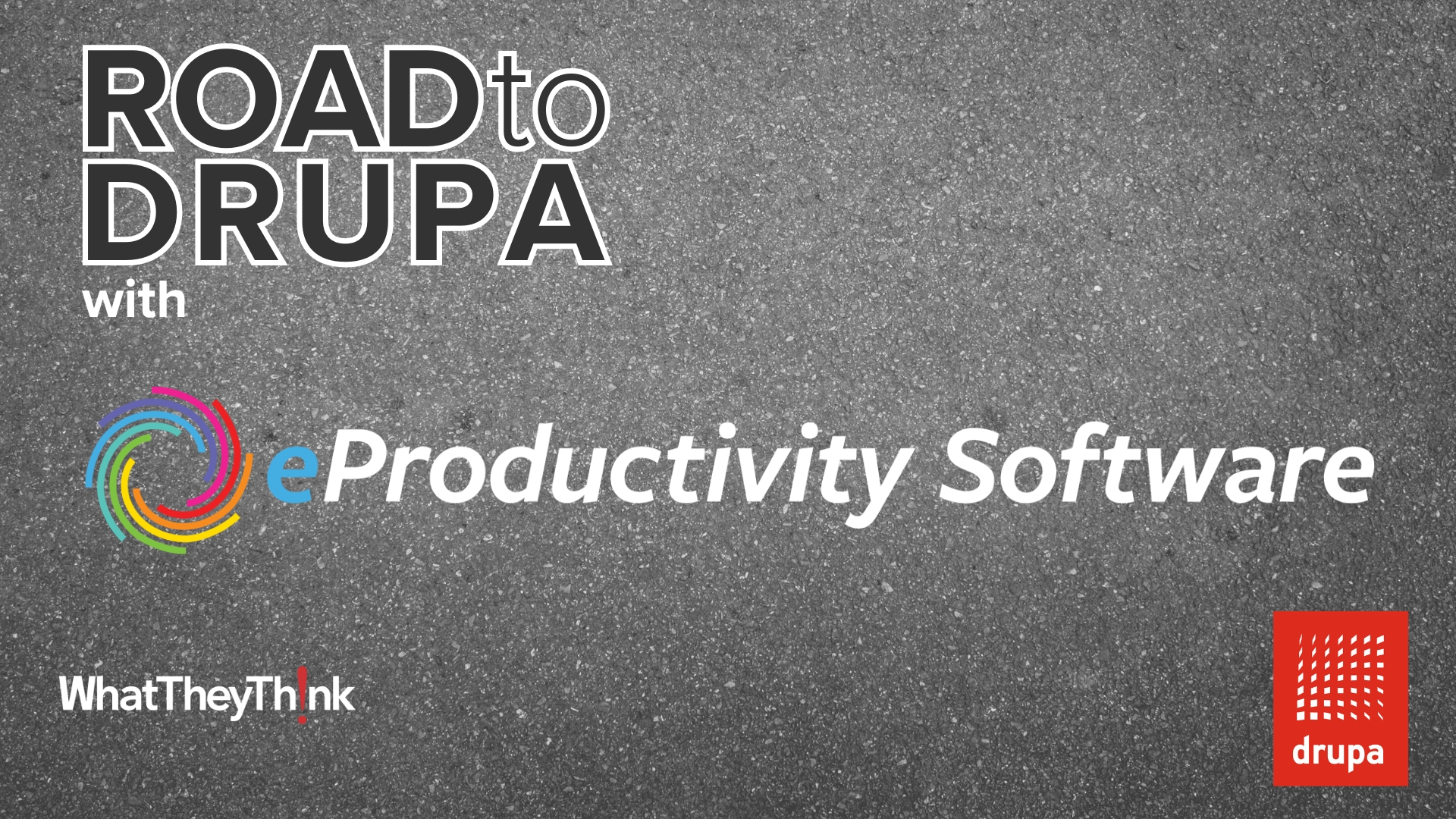The Power of Middleware
As we concluded Graph Expo 2008, I was reflecting on the key trends that bubbled to the surface for me as I walked the show floor and conducted video interviews with industry leaders. Of course, there were lots of exciting product announcements being made, and the North American debut of many more that were announced at drupa. In line with the recommendations of the Must See ‘ems panel, many of these announcements revolved around important technologies such as Web to Print and MIS. They are becoming more affordable, and easier to implement and use. But in a very real sense, there are still islands of automation in many firms. Too often, “swivel chair integration” is required to move data from one island to another, and that can result in errors, delays and less-than-optimum efficiencies.
Enter middleware. According to Wikipedia, “Middleware is computer software that connects software components or applications. The software consists of a set of enabling services that allow multiple processes running on one or more machines to interact across a network. This technology evolved to provide for interoperability in support of the move to coherent distributed architectures, which are used most often to support and simplify complex, distributed applications.” Early middleware addressed the need to unify, and move information to and from, different operating systems and applications that could not seamlessly interact with each other. Today, there are more standards in place, and more standards-compliant applications. For example, JDF provides a set of standards against which developers can write applications. By doing so, diverse applications from different suppliers can more easily, accurately and automatically communicate with each other to exchange mission-critical information, eliminating the need for “swivel chair integration.”
But users will readily tell you that it is not always automatic or easy. During the show, I spoke with Rich Lowe, President of Sir Speedy, who has the challenge of finding and implementing solutions that can work across the firm’s network of more than 600 franchise locations. Although he admits that this work is easier than it has been in the past, and that the major suppliers are doing a great deal to help users make the transition, he is adamant that we still have quite a way to go down the “easy” path.
The good news is that the show floor exhibited a wide range of what could be called middleware, there is a growing number of partnerships in the vendor community that are bringing disparate systems together, and we are seeing more and more tools and automation solutions that will reduce the challenge over time. It will still take some work to ferret out the ones that best meet your particular needs. But increasingly, they are available and they are affordable.
Space does not allow discussion of all of the solutions that fall into this category, but I do want to highlight a few, starting with Enfocus Switch and Crossroads. Enfocus Switch made its debut as CaslonFlow from Gradual Software three years ago, later renamed Switch. Following the sale of Enfocus to Esko, its founders formed Gradual Software with the goal of developing a solution to interconnecting these islands of automation, particularly in prepress and publishing environments. Subsequently, Gradual was acquired by EskoArtwork, giving Switch access to the increased resources of the larger parent company.
The Enfocus family of Switch products (Light Switch, Full Switch, Power Switch) uses configurators to quickly and easily configure Enfocus and third-party applications to link software applications and create automated, end-to-end workflows. Switch has developed configurators for popular applications from suppliers such as Adobe, Alwan, Callas, Elpical, PerfectProof and Ultimate. The company has focused its efforts largely on Europe, but is now heating up efforts in North America. It is a mature, stable application that can play a role in tying together and automating many different processes within any printing or publishing organization.
Switch was being demonstrated at Graph Expo in the Crossroads booth. Crossroads is a unique communication platform that draws together a large ecosystem of software vendors that interact with Switch to deliver automation solutions for publishing workflows. Crossroads members collaborate to solve specific customer automation problems, often making sample workflows resulting from this work available for use by others. The group conducted its first automation seminar during Graph Expo, and is planning to take these full-day seminars on the road in North America, a practice that has proven very successful in Europe.
Crossroads represents a good example of the type of multivendor cooperation we are increasingly seeing, and which we hope to see even more of in the future. Importantly, it combines innovative automation solutions with concerted educational efforts that are likely to make it easier for users to make the automation transition.
Another interesting company I came across at the show is Hybrid Integration. Founded by Michael Rotterborn and several former Artwork Systems employees, Hybrid Integration brings a Web 2.0 middleware approach designed to connect the dots among MIS systems, web portals, financial systems, and prepress, proofing and production workflows, through to fulfillment and shipping. I spent some time looking at the central application in the Hybrid suite, Job Management System (JMS), now in Version 3.0. It appears to be quite easy to configure and use, and its Web 2.0 interface makes navigation and management of multiple windows (dialog boxes) easy to manage. Although it is a web application, it is sold as licensed software and does not carry a “click” charge or charge per user or transaction. It is JDF compliant and written in Java. Although it didn’t get a Must See ‘ems or Worth-A-Look award at the show, it is worth a look for anyone facing these types of integration challenges. It includes both internally and externally facing (branded storefront) modules that all run off of a single database.
Increased integration was also being shown across the EFI portfolio with enhancements to Digital StoreFront, JDF-certified PACE, the newly configured Monarch Suite, and increasing integration of its Fiery server solutions with all of these applications. Monarch is EFI's JDF-certified end-to-end workflow and management solution for large single and multi-plant operations, featuring advanced visual planning, dynamic scheduling and direct machine interface. Pace is EFI's recently-acquired fully integrated, scalable, browser-based print shop management solution, including modules for estimating, production management, inventory and fulfillment, purchasing, data collection, integrated accounting, along with integration with PrintFlow dynamic scheduling and Digital StoreFront.
Avanti also announced that it achieved JDF certification just prior to the show, and CEO Patrick Bolan asserts that the company is focused on delivering an open application that can leverage third party applications as needed.
Press-sense iWay 5.0, unveiled at the show, also provides a single view into the production and business operation, making it easy for all orders to flow the system whether they come in via the web or are entered by a CSR or sales representative in the field. Press-sense provides a great example of a solution offering an affordable ease-of-entry approach that can being with a hosted, or software as a service approach, and can migrate to more complex implementations as the business grows. Press-sense partners with many of the major equipment vendors to market its product, in some cases customizing the solution to meet the specific digital workflow needs of their particular environments. Press-sense OEM partners include HP, Infoprint, Presstek, Océ, and Xerox.
Hiflex was showing its MIS solution and JobShop, an integrated storefront solution that also runs from the same database as the MIS. I visited their booth to take a look, and shared a demo with an MIS customer in the process of making a decision about adding JobShop. The customer was so excited about the potential that he jumped in and took over the demo!
Creo Color Servers, an independent business unit of Kodak, continues to enhance its digital front ends, in use with products from Kodak, HP, Océ, Xerox and Konica Minolta, and works with these suppliers to ensure that JDF-compliant Creo RIPs mesh with the rest of the production workflow.
As part of PersonalEffect 4.5, XMPie has partnered with PB Systems to develop connectors to digital asset management solutions. Connectors are currently available for Artesia and Xerox DocuShare. President Jacob Aizikowitz indicates that additional connectors will be developed to specifically connect to other digital asset management packages. The company already connected to a wide variety of third party databases using Interactive Content Ports (ICPs) and Application Programming Interfaces (APIs), but the new connectors enable an even more seamless and native connection, increasingly important as cross media communications become even more graphics rich. XMPie was distributing an educational white paper at the show as well. If you weren’t at the show, the paper can be downloaded from XMPie’s web site.
Kodak’s InSite Campaign Manager also continues to evolve, and brings together a range of Kodak and other resources to provide an integrated cross media campaign development, deployment, and measurement experience for both marketers and marketing service providers. Uniquely, InSite Campaign Manager includes sophisticated data mining tools and capabilities packaged in a way that make them accessible to users without the need to have highly sophisticated data mining skills.
I was also pleased to see that major suppliers to the industry, including HP, Infoprint, Kodak, Océ and Xerox, are stepping up their efforts to bring affordable professional services to businesses at all sizes to help them make the most of the integration opportunities available to them, from building effective business and marketing plans, to planning and executing implementations. Xerox’ The New Business of Printing Business Development Services connects businesses with internal or external trained consultants for as little as $2,500. Kodak’s MarketMover Business Development Services combines expert teams of professionals with extensive, regularly updated online resources and personalized services that include on-site training and educational seminars. Both Kodak and Xerox have established user communities that facilitate networking with other users, enabling them to share best practices, distribute work and learn from each other. Both Océ and Infoprint have aggressive programs in place to help customers better understand and overcome the challenges associated with implementing TransPromo communications programs, partnering with experts in the field such as NEPS as well as leveraging their own internal expertise. Infoprint’s demonstration of the TransPromo pilot it conducted with Best Western using GMC PrintNet composition tools was particularly informative, taking visitors as in-depth into the process as they cared to go, making available representatives from its TransPromo services team, data analytics experts, and specialists in direct marketing and composition. HP’s Capture Business Success business development program provides tools, training & communities to help companies grow their graphic arts businesses. All of these services were highlighted on the show flow, and companies made experts available for one-on-one discussions so that attendees can begin to think about the best ways to improve the efficiency of their operations.
This is just a sampling of the middleware offerings we saw at Graph Expo 2008 and the services that suppliers are wrapping around them to facilitate implementation. There is no question that these are challenging times, and if you listened to Dr. Joe Webb’s talk on Tuesday morning, you know it is likely that they will remain challenging for some time to come. But as I heard many attendees and suppliers to the industry say at the show, “This is not the time to sit back and say ‘woe is me.’ It is a time to reexamine our businesses, to look for ways to take time and cost out of the process, to become more efficient, and to continue to advance the portfolio of services we can offer to our customers.” The economy will come back; it always does. Taking these steps will help your business be there as well, stronger, more vibrant, more competitive and more profitable.
Graph Expo was a great platform for presenting these options; I hope you were able to be there. If you weren’t, peruse the news and coverage on WhatTheyThink, and take some positive steps to bring more middleware—and more integration and efficiency—into your business. The time is now.
Commentary & Analysis
Moving the Industry to the Next Level
The Power of Middleware As we concluded Graph Expo 2008,
About Cary Sherburne
Cary Sherburne is a well-known author, journalist and marketing consultant whose practice is focused on marketing communications strategies for the printing and publishing industries.
Cary Sherburne is available for speaking engagements and consulting projects. To get more information contact us.
Please offer your feedback to Cary. She can be reached at [email protected].
Video Center
- Summary of Drupa 2024 inkjet announcements Production Print
- Inkjet driving insourcing for state in-plants
- Real World AI for the Printing Industry
- Harnessing the Power of Synergy: HP High Speed Inkjet and Indigo Liquid Toner Technologies
- KYOCERA NIXKA INKJET SYSTEMS (KNIS) INTRODUCES BELHARRA, THE NEW WAVE OF PHOTO PRINTERS
- New RISO Printing Unit Offers Easy Integration for Package Printing
- March 2024 Inkjet Installation Roundup
- Inkjet Integrator Profiles: Integrity Industrial Inkjet

WhatTheyThink is the official show daily media partner of drupa 2024. More info about drupa programs
© 2024 WhatTheyThink. All Rights Reserved.








